HOUSE TRAINING
Each puppy picks up this skill at a different pace, but all dogs are very capable of learning how. All members of the family need to be on board to let the puppy outside at frequent, predictable intervals, and everyone needs to help supervise the puppy closely while it’s indoors. If close supervision is not possible, even for a few minutes, keep the puppy confined to a crate. The number one goal of house training is to prevent accidents, and this can only be done with close supervision. Watch your puppy for signals that they’re getting ready to potty, such as circling, sniffing, or barking.
For your best chances of success, take your puppy to the designated potty area:
- First thing in the morning
- 5-15 minutes after meals or drinking
- Anytime you take him/her out of their crate
- During periods of intense play or excitement
- After naps
If you find an accident, remember: it’s not the puppy’s fault! Never punish a puppy for accidents, as they will not understand why you’re upset. Instead, clean the accident with an enzymatic cleaner to remove any lingering odor that may draw them back to the same spot.
Remember, you need to be with your puppy when they do their business in the right place, and immediately reward them with lots of praise and at least two yummy treats.
Coprophagia
Some puppies develop the disgusting habit of eating their own poop. This is very common and does not mean they are suffering from some nutritional deficiency. While there are products available to sprinkle on their food to deter this habit, the best approach is to prevent access to the feces altogether, and they should eventually outgrow this habit.
CRATE TRAINING
Crate training your puppy is one of the most important things you can do to establish a good relationship with your new companion. Crate training helps in all stages of a dog’s life – from housebreaking and chewing in puppyhood to separation anxiety in an adult dog. Remember, dogs are naturally den animals, so crate training helps maintain their feelings of being “in their own element.”
To help make your puppy’s introduction to crate training a positive one, start by tossing a yummy treat into the crate and letting your puppy wander in to get it. Repeat this 8-10 times before closing the door for a few seconds. Gradually increase the duration of time that puppy is closed in the crate from a few seconds to a few minutes. To keep the puppy content in their crate, offer them an appropriate chew toy, such as a Kong stuffed with some reduced-fat peanut butter, apple sauce, or other yummy ingredients. Freezing the Kong will make it last longer. Better yet, offer this yummy toy/treat only when the puppy is in their crate.
The goal of crate training is to teach the puppy that they can entertain themselves and be alone without feeling panicked. It is important for the puppy to sleep in their crate, and not in bed with you. Some crying will be expected, especially at first, but as long as you’re sure they don’t need to be let outside to potty, ignore their behavior. To help them feel a little less stressed, you can try covering the crate with a heavy blanket, playing some music or white noise, or using a dog pheromone spray such as D.A.P. You can keep the crate in the bedroom with you or in another room within hearing distance so the puppy can tell you if they need to go out in the middle of the night. They do not need water overnight.
If the puppy is having accidents in the crate, make sure the crate is an appropriate size. They should have enough room to get up, turn around, and lay down. Too much room will allow them to potty in the crate and move away from it. If the puppy is still having accidents, you may be asking them to hold it too long or their stress level is too high and they can’t “hold it”.
BASIC TRAINING
One of the first commands you should teach your puppy after “crate” or “kennel up” is “sit.” There are numerous methods to teach your puppy, but we suggest not jerking or physically pushing your puppy into a sitting position (or any other position). Try elevating their head gently or holding a treat over their head to coax their hindquarters toward the ground, all the while saying gently, yet firmly, “SIT.” You may also like to incorporate a specific hand signal with each command. Many dogs will respond without words having to be used.
Next, you may try and teach your puppy to shake, or give a paw. To do this, have your puppy sit, and while giving your chosen command, lift one paw and shake, just like shaking someone’s hand.
The third command you may teach is to lie down. It is best to just use one word, such as “down,” because it uses a hard consonant sound that is easier to understand. You should try to avoid multiple syllables, as too many can be confusing to your puppy. To teach your puppy “down,” have them sit, then move a treat downward, toward their paws, to coax them down.
Some other important commands to teach your puppy are “stay” and “leave it.” Teaching these two commands requires some patience, but both can help your puppy avoid dangerous situations, such as running into traffic or ingesting a dangerous bone that a careless picnicker has left on the ground.
Remember, when teaching your puppy new commands, be patient and always offer rewards. Your rewards should vary – give treats sometimes, and other times give them a nice pat or a scratch on the back. “Good girl” or “good boy” work well, too. Your puppy should always be required to “work for rewards,” meaning they should follow a command before receiving any kind of treat. If your puppy learns that nothing is free, they will be more obedient and respect your dominant position in their family. And finally, consult a professional trainer when the going gets tough, or even if you just need some extra advice. Training your puppy to become an obedient member of society will make for a longer-lasting and more enjoyable relationship with you, your family and your friends.
We offer puppy basic training and intermediate classes on Saturdays. Ask our front team members when the next class starts, and get your puppy on the right track!
LEASH/COLLAR/HARNESS
Always keep a collar on your puppy (except a choke collar), even if he or she is inside. It is too easy for your puppy to slip out the front or back door and, in the midst of excitement, take off on a running spree. If your puppy has a collar with appropriate identification, you have a much greater chance of his or her return. Do not leave the collar loose. You should be able to put two fingers between the collar and the neck of the puppy. If it is too loose the puppy will slip out of it. Check the distance often, as your puppy grows it will need to be adjusted.
When choosing a leash for your puppy, choose one between 2-4 feet long. The shorter leashes provide more control; and therefore, help you in training your puppy. Choose a sturdy leash with a sturdy clasp. If your puppy is a toy breed, don’t choose a heavy duty clasp that will weigh them down, instead, choose a lightweight one. And if your puppy is a medium to giant breed, choose a heavier duty clasp that isn’t likely to break as your puppy grows.
Do not use a retractable leash. These are not safe and do not allow any control over the dog.
Harnesses work very well for puppies that pull excessively. They are also recommended for smaller dogs and for dog breeds that are prone to or have been diagnosed with tracheal collapse.
CHEWING/BITING
Puppies love to explore their world with their mouths – and they have no idea how sharp those little teeth are!
When the puppy’s teeth meet your skin, keep in mind the following:
- Our hands (feet, clothes, etc) are not toys!
- Respond the same way a puppy playmate might – let out a little yipe! Or a high-pitched Ow! Be over-dramatic, it’s ok!
- Don’t punish – no swatting, holding muzzle, or yelling.
- Instead, turn your back, hide your hands, avoid eye contact, and generally refuse to play.
- Redirect the puppy’s chewing instincts towards an appropriate toy, and praise them when they chew the right thing!
Luckily, those sharp teeth start to fall out around 5-6 months of age. Chewing will continue (it is part of being a dog), but it will be gentler if you help them learn appropriate behavior as a puppy.
Destructive or dangerous chewing can be discouraged with:
- Using Bitter Apple or Chew Guard
- Covering electrical cords with PVC piping or similar products
- Crate training
- Preventing access to valuables
|




